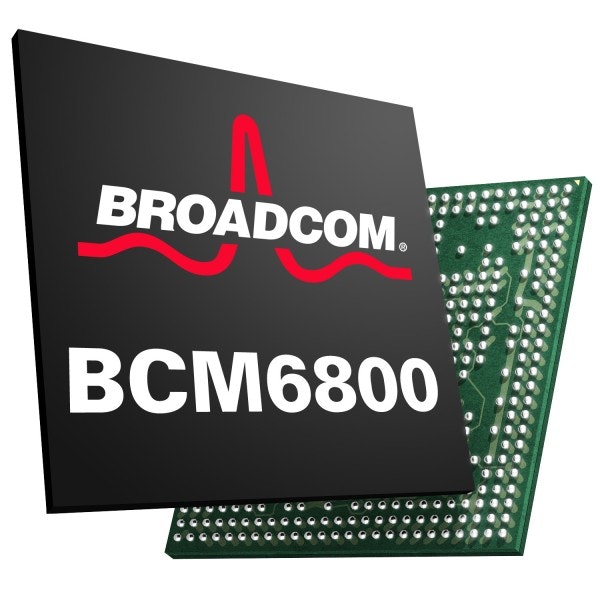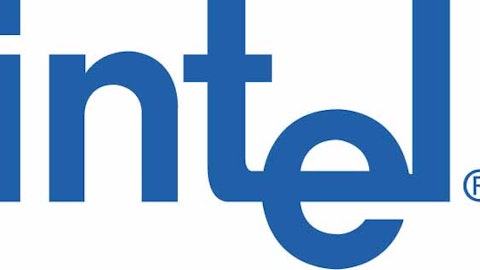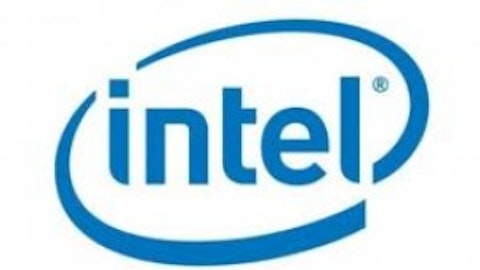At times, it makes more sense to consider a side bet instead of making a big bet on the main event. Many people have a viewpoint about the showdown between Samsung Electronics, Apple Inc. (NASDAQ:AAPL), and several others in mobile device market.

It’s a little harder, however, to visualize how Qualcomm, Inc. (NASDAQ:QCOM) won’t win in any of those scenarios. There always seems to be questions surrounding Qualcomm, Inc. (NASDAQ:QCOM), such as: Why don’t they have more operating leverage? Just how good is Apple’s unit growth? Could Broadcom Corporation (NASDAQ:BRCM) grab some market share?
With Broadcom’s chips operating in all types of activities and devices, growth can be preserved even if one of the corporations that makes use of its devices has a difficult quarter or two. New Samsung orders can provide Broadcom Corporation (NASDAQ:BRCM) an additional boost as the next wave of mobile phones arrives at the market. In my opinion, Qualcomm continues to be an excellent stock to own, provided that you have confidence that the mobile device sector will experience growth.
Qualcomm’s fiscal first quarter results deliver once again
Qualcomm, Inc. (NASDAQ:QCOM) has reported a very strong start to its fiscal year, with a good overall performance across the board. The company’s revenue increased by 29%, not bad for the typical sell-side guess. Chip revenue went up by 34% on even growth in chip shipments and ASPs. Meanwhile, licensing revenue rose 22% on a comparable increase for global handset shipments. Qualcomm reported a 6% rise in average ASPs (the two don’t add up to the total licensing earnings rate of growth because of varying license/royalty rates.)
Qualcomm produced additional sales this quarter that translated into more profits. Gross margin improved somewhat compared to last year (about 20bp), still more than one point better compared to what analysts had anticipated. Operating income increased nearly one-third, despite having high continuing R&D investment charges.
Second quarter appears to be a little more challenging
Qualcomm’s management doesn’t get very aggressive with their guidance, so they might end up having conservative numbers after this quarter. The company did guide a bit above the earlier estimate for fiscal Q2 net income and EPS.
I do anticipate there will be a few issues regarding Qualcomm’s operating leverage. Gross margins looks like they could be under some pressure next quarter, since handset prices reset and also the organization sees a few dis-economies of scale that are associated with new manufacturing runs. Similarly, the company continues to be focused on funneling a considerable portion of its profits into R&D.
It’s always one thing or another with Qualcomm
Very few businesses have been able to create a company like Qualcomm, Inc. (NASDAQ:QCOM). Because it has the leading IP in LTE and CDMA, the company is the toll-taker in the mobile device world, and collects about 3% or more of handset values from licensees. Concurrently, Qualcomm is a very strong competitor in the chip arena, with almost 50% market share for base-band chips.
Investors will still experience some concerns. Every so often, there are worries that a new technology or standard might replace Qualcomm or that the company could lose its edge during transitions between generations. In fact, there were some worries (largely unproven) at one time that its 4G may not be as formidable.
Also, there are some concerns linked to execution and competition. Broadcom really does want to be a serious player and it certainly has excellent IP quality to become a threat.
Moreover, Intel Corporation (NASDAQ:INTC) might not be quite as powerful in the IP sector, yet it has the production capacity and expertise. Intel is a exceptional company and is far ahead of its competitors on R&D and producing Facade. Intel’s PC and server processor business supplies a comfortable income currently and its steps toward diversity should help it over time; until then shareholders can appreciate the incredible dividend yield. At the moment, Intel is trading at a heavy discount at a P/E of 9.3, which happens to be less than half of the industry average.
It’s worth remembering that Qualcomm doesn’t control its manufacturing, and this caused some difficulties for them, such as the yield and supply problems with the 28nm chips in 2012.
The bottom line
I can certainly understand if investors have concerns about lower handset ASPs reducing Qualcomm’s licensing revenue with no corresponding rise in unit growth. Even so, I believe that the mobile market continues to be in a good position for the near future. Likewise, even though I do think Broadcom will end up being a bigger player, I believe this should be a bigger concern to STMicroelectronics N.V. (ADR) (NYSE:STM), Marvell Technology Group Ltd. (NASDAQ:MRVL) or Intel than Qualcomm. When it comes to the operating leverage issue, frankly, I don’t have any worries there. Qualcomm currently produces sufficient cash flow and if significant R&D reinvestment is the price of sustaining market share, then I can live with that.
For Qualcomm, Inc. (NASDAQ:QCOM), I model its longer-term revenue growth at 8%, although I believe there might be some year-to-year differences in operating margins and also for free cash flow (FCF) creation. I believe this company will keep improving its conversion rates for the next several years. In the end, I believe Qualcomm will be able to increase free cash flow continually at low double-digit rates, and this will support a fair stock value that’s in the range of the low-to-mid $80s. In that price range, I believe Qualcomm is a good investment choice for investors who want some exposure to the mobile device market.
The article Why Qualcomm Is Still a Good Investment originally appeared on Fool.com and is written by Marcus Vilkas.
Copyright © 1995 – 2013 The Motley Fool, LLC. All rights reserved. The Motley Fool has a disclosure policy.




